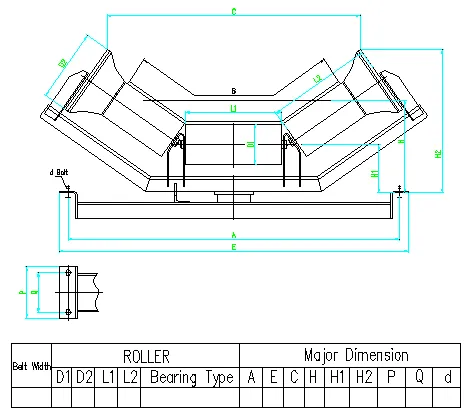 Afrikaans
Afrikaans  Albanian
Albanian  Amharic
Amharic  Arabic
Arabic  Armenian
Armenian  Azerbaijani
Azerbaijani  Basque
Basque  Belarusian
Belarusian  Bengali
Bengali  Bosnian
Bosnian  Bulgarian
Bulgarian  Catalan
Catalan  Cebuano
Cebuano  Corsican
Corsican  Croatian
Croatian  Czech
Czech  Danish
Danish  Dutch
Dutch  English
English  Esperanto
Esperanto  Estonian
Estonian  Finnish
Finnish  French
French  Frisian
Frisian  Galician
Galician  Georgian
Georgian  German
German  Greek
Greek  Gujarati
Gujarati  Haitian Creole
Haitian Creole  hausa
hausa  hawaiian
hawaiian  Hebrew
Hebrew  Hindi
Hindi  Miao
Miao  Hungarian
Hungarian  Icelandic
Icelandic  igbo
igbo  Indonesian
Indonesian  irish
irish  Italian
Italian  Japanese
Japanese  Javanese
Javanese  Kannada
Kannada  kazakh
kazakh  Khmer
Khmer  Rwandese
Rwandese  Korean
Korean  Kurdish
Kurdish  Kyrgyz
Kyrgyz  Lao
Lao  Latin
Latin  Latvian
Latvian  Lithuanian
Lithuanian  Luxembourgish
Luxembourgish  Macedonian
Macedonian  Malgashi
Malgashi  Malay
Malay  Malayalam
Malayalam  Maltese
Maltese  Maori
Maori  Marathi
Marathi  Mongolian
Mongolian  Myanmar
Myanmar  Nepali
Nepali  Norwegian
Norwegian  Norwegian
Norwegian  Occitan
Occitan  Pashto
Pashto  Persian
Persian  Polish
Polish  Portuguese
Portuguese  Punjabi
Punjabi  Romanian
Romanian  Russian
Russian  Samoan
Samoan  Scottish Gaelic
Scottish Gaelic  Serbian
Serbian  Sesotho
Sesotho  Shona
Shona  Sindhi
Sindhi  Sinhala
Sinhala  Slovak
Slovak  Slovenian
Slovenian  Somali
Somali  Spanish
Spanish  Sundanese
Sundanese  Swahili
Swahili  Swedish
Swedish  Tagalog
Tagalog  Tajik
Tajik  Tamil
Tamil  Tatar
Tatar  Telugu
Telugu  Thai
Thai  Turkish
Turkish  Turkmen
Turkmen  Ukrainian
Ukrainian  Urdu
Urdu  Uighur
Uighur  Uzbek
Uzbek  Vietnamese
Vietnamese  Welsh
Welsh  Bantu
Bantu  Yiddish
Yiddish  Yoruba
Yoruba  Zulu
Zulu drive rollers for conveyors
Drive Rollers for Conveyors An Overview
In the realm of material handling and automation, conveyor systems play an integral role in enhancing efficiency and streamlining operations in various industries. One of the vital components of these systems is the drive roller. Drive rollers are crucial for the movement of goods along conveyor belts and are designed to manage a range of functions that are essential for the efficient operation of conveyors. This article explores the importance, types, and applications of drive rollers in conveyor systems.
The Function of Drive Rollers
Drive rollers are the driving force behind conveyor systems. They are responsible for transferring power from the drive motor to the conveyor belt, enabling the belt to move smoothly and effectively. When a motor powers the drive roller, it rotates, causing the belt attached to it to turn and transport materials from one point to another. This functionality is vital for industries that rely on continuous flow, such as manufacturing, warehousing, and distribution.
The key characteristics of drive rollers include their diameter, length, and weight capacity. The design of the roller also plays a significant role in its efficacy. For example, a larger diameter roller can increase the conveyor's maximum load capacity and efficiency, while smaller rollers can provide precision movement for lighter materials.
Types of Drive Rollers
There are several types of drive rollers, each engineered for specific applications and requirements
1. Powered Rollers These rollers are fitted with a motor that directly powers the roller’s movement. Powered rollers are often used in accumulating conveyors, allowing products to be moved smoothly without gaps.
2. Gravity Rollers While not powered, gravity rollers can be used in tandem with powered rollers. Material flows over them due to gravitational pull, and they are often utilized in gravity-fed conveyor systems.
3. Idler Rollers These are non-powered rollers that support the conveyor belt and help maintain its tension. They play a significant role in the overall structure of the conveyor system.
drive rollers for conveyors

4. Conical Rollers Used in belt curves, these rollers allow the conveyor belt to navigate turns smoothly, minimizing wear and tear on both the belt and the roller.
5. Grooved Rollers Designed to enhance grip, grooved rollers can be particularly effective for specific materials or applications where slippage might be a concern.
Applications of Drive Rollers
Drive rollers are utilized across a wide range of industries, each with unique demands. In the automotive industry, drive rollers are essential in assembly lines, where precision and speed are both critical. In the food and beverage sector, they are used to transport products through various stages of processing and packaging, ensuring hygiene and efficiency.
E-commerce has significantly driven demand for advanced conveyor systems equipped with drive rollers, particularly in distribution centers where rapid and reliable order fulfillment is required. Moreover, in the manufacturing sector, these rollers help automate processes, thus reducing labor costs and increasing output.
Maintenance and Best Practices
Regular maintenance of drive rollers is vital for ensuring longevity and performance. This includes routine inspection for wear and tear, proper alignment, and lubrication of moving parts to reduce friction. Recognizing the signs of potential failure—such as unusual noises or vibrations—can prevent costly downtime and repairs.
Choosing the right type of drive roller for a specific application can also significantly impact the effectiveness of a conveyor system. Factors such as the load capacity, speed, and environment should be considered when selecting drive rollers to ensure optimal operational efficiency.
Conclusion
In conclusion, drive rollers are a critical component of conveyor systems that contribute significantly to the efficiency and effectiveness of material handling operations. Their ability to power the movement of goods in various industries underscores their importance in modern manufacturing, logistics, and distribution. By understanding the different types, applications, and maintenance practices associated with drive rollers, businesses can enhance their operations, reduce costs, and improve overall productivity. Investing in high-quality drive rollers and implementing best practices can yield substantial benefits, making them an essential consideration in conveyor system design and operation.
-
Revolutionizing Conveyor Reliability with Advanced Rubber Lagging PulleysNewsJul.22,2025
-
Powering Precision and Durability with Expert Manufacturers of Conveyor ComponentsNewsJul.22,2025
-
Optimizing Conveyor Systems with Advanced Conveyor AccessoriesNewsJul.22,2025
-
Maximize Conveyor Efficiency with Quality Conveyor Idler PulleysNewsJul.22,2025
-
Future-Proof Your Conveyor System with High-Performance Polyurethane RollerNewsJul.22,2025
-
Driving Efficiency Forward with Quality Idlers and RollersNewsJul.22,2025





























